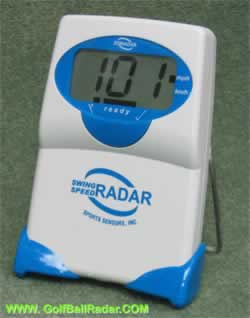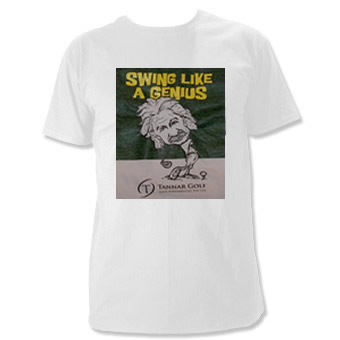
|
|
|
Welcome to Probable Golf's FREE Handicap Calculator! The following Golf Handicap Calculator uses an average of your best previous rounds of golf. The USGA Course Rating and Slope Rating should be available from your scorecard or from your golf course. If not, look them up here. These will make your handicap calculation more accurate. You must enter at least 5 adjusted scores for this calculator to accurately calculate your handicap. An adjusted score takes into account the Equitable Stroke Control system. You must also enter the course and slope ratings for the courses played.
How a USGA golf handicap is calculated.A USGA Handicap Index is a USGA mark that represents the potential ability of a player on a course of standard difficulty. Potential ability is measured by a player's best scores, and is expressed as a number taken to one decimal place. These scores are identified by calculating the handicap differential for each score. The USGA Handicap Index is calculated by taking 96 percent of the average of the best handicap differentials, and applying Section 10-3 for golfers with two or more eligible tournament scores. 10-1. How to Determine Handicap DifferentialsA handicap differential is computed from four elements: adjusted gross score, USGA Course Rating, USGA Slope Rating and 113 (the Slope Rating of a course of standard difficulty). To determine the handicap differential, subtract the USGA Course Rating from the adjusted gross score; multiply the difference by 113; then divide the resulting number by the USGA Slope Rating. Round the final number to the nearest tenth. Handicap Differential = (Adjusted Gross Score - USGA Course Rating) x 113 / USGA Slope Rating When the adjusted gross score is higher than the USGA Course Rating, the handicap differential is a positive number.
The new way to adjust scores with Equitable Stroke Control
sets a maximum number that a player can post on any hole depending on the
player's Course Handicap.
Scan your score card for any hole where your score (actual or probable) is higher than your maximum number. Reduce these higher scores to your maximum number for handicap purposes. Post your adjusted score.
Scratch Golferis one whose proficiency is such that the better half of his scores will equal the equivalent of what the better half of the US Amateur Championship field scores. This golfer can really hit it.
Bogey Golferis one with a USGA Handicap Index® of 17.5 to 22.4 (21.5 to 26.4). He (she) can hit tee shots an average of 200 (150) yards and can reach a 370 (280) yard hole in two shots. This golfer hits it more than once to get it to the hole.Course RatingThe USGA® mark that indicates the evaluation of the playing difficulty of a course for scratch golfers. It is based on yardage and other obstacles to the extent that they affect the scoring difficulty of the scratch golfer. Example: 68.5Bogey Ratingthe one number every golfer worse than a scratch should check before deciding which tees to play. This rating is the evaluation of the playing difficulty of a course for the bogey golfer. It is based on yardage, effective playing length and other obstacles to the extent that affect the scoring ability of the bogey golfer. To figure out this number, other than from looking at this database, the bogey golfer should take the Slope Rating®, divide it by the set factor (5.381 for men, and 4.24 for women) and add that to the Course Rating. The result is a target score for the bogey golfer, and is a truer yardstick of the challenge that lies ahead for the particular set of tees. Example: 96.3- which predicts the bogey golfer's average of his ten best (out of twenty) scores would be approximately 96.3 from this particular set of tees.Slope Ratingthe USGA mark that indicates the measurement of the relative difficulty for
the bogey golfer compared to the Course Rating. Slope Rating is computed
from the difference between the bogey rating and the Course Rating. The lowest
Slope Rating is 55 and the highest is 155. Example: 125 ©Probable Golf Instruction, Ken Tannar 2001-2015. All Rights Reserved. Langley, B.C. V2Y 2G4 CanadaPhone: 604-309-7030 FAX: to fax, email an attachment probablegolf@yahoo.ca or golfexpert@probablegolfinstruction.com |
| GOLF ASSISTANTS |
|
Golf Trip Pairing CalculatorPlanning a golf trip with some friends/family? Trying to sort out the foursomes so people don't play too often with others? Order your ready made Spreadsheet. Type in the names, print out the groupings. Minimize repeat pairings.
Wind Caddy will advise you on aim, distance and club so that you can play the wind successfully. It takes the guess work out of club selection. New option to enter custom distances for each club. The algorithm will make a club suggestion accordingly. Use the right club in every condition!
|
|
|
| GOLF NEWS |
Golf Putting Green Reading Glasses |
| GOLF NEWSLETTER |
Statistics
·Putting
·Long Balls
·Games
·Handicap
·Scoring
·Shot Patterns
·Tournaments
·Tours
Pro Shop
·Ball Marker Engraved
·Books
·CDs & DVDs
·Green Reader
·Impact Labels
·Laser Rangefinder
·Longer Drives
·Products
·Teaching Aids
|
|
| GOLF POLL |
The 19th Hole
·Advertising
·Ask the Golf Expert
·Consultation/Litigation
·FAQs
·Golf Blog
·Golf Draws
·Links
·Science of Golf
·Tell a Friend
·Testimonials
·

Golf Ball Finder Glasses
Find all your errant golf balls and many more!
| GOLF TIPS |
How to play:
|





